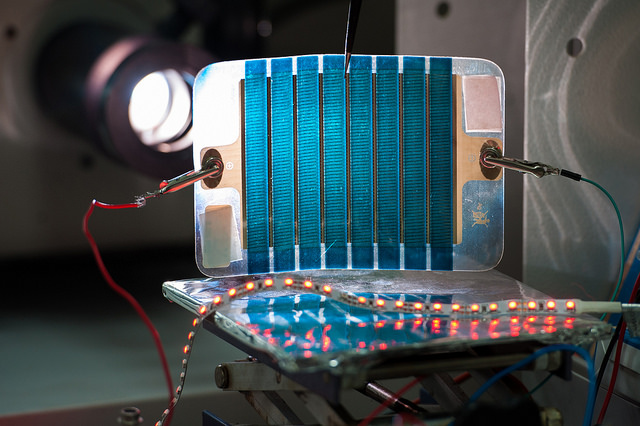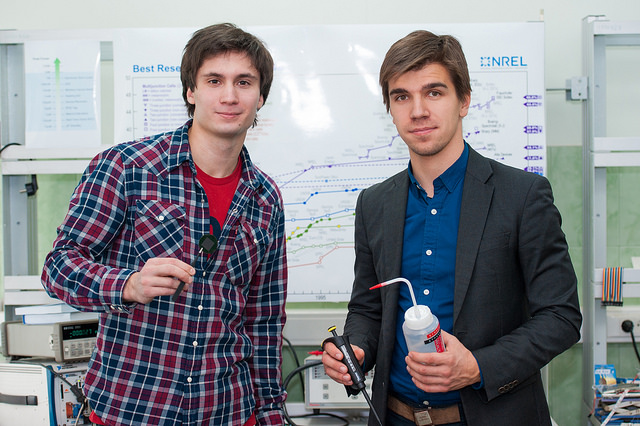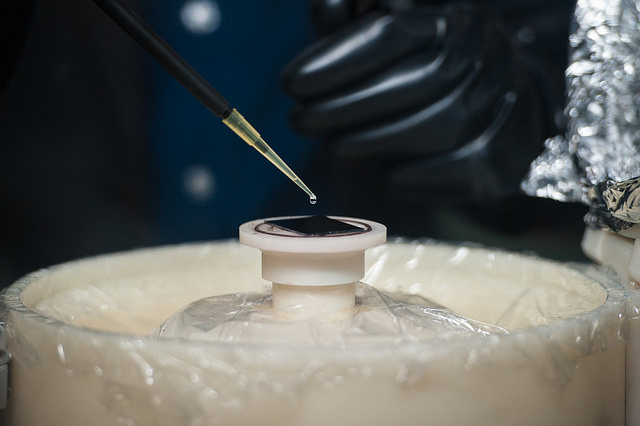Translucent megagrant: how to spend 90 million
Thirty-five times ninety million rubles for the creation of new laboratories, while the existing ones are sitting without money. And not only that in their favor a piece from this megagrant cannot be bitten off, so also, on the contrary, from the budget of the university will have to continue this new laboratory to the detriment of the rest. Add to this the black envy of colleagues sifting microgrants from other funds. Plus, the war of ambition and measurements hirsha on all fronts. And what did our scientific organizations find in these megagrants, apart from the problems? What can they get? Is it possible somewhere to sit down? Or is there something else?

Various thoughts about mega-grants, mega-agrants and mega-results have been visiting the scientific community for the sixth time. Because so many competitions held by the Ministry of Education and Science of Russia. Two hundred laboratories have been created, and now thirty five more will appear. And since this topic is not stalled, as the program "Frames", for example, then clearly someone sees some benefit in it. True, it is not always clear which one.
Although, with megauchennymi everything is just clear. They decide the world science, waving hirschs of unprecedented dimensions, and from such waving hirsch only grows. They are attracted to Russia for real money, which they probably enjoy. Another thing is that megagrantniki can in Russia literally do what they want. And the equipment for their project provide the highest quality, so in this sense there are no problems. And they recruit employees for themselves in their own image and likeness, so there is someone to talk to and leave for themselves in the event of departure. And they are busy people, each working for two or three institutes. As for employees, this, by the way, is a hint to those who want to work under the guidance of the world's leading scientists in Russia. They usually get people into the team through open contests.

Young employees of NUST "MISiS" Danila Saranin and Artur Ishteev. Photo: Maria Brodskaya / Press Service of NITU "MISiS"
A reasonable question arises - well, laboratories have been created under the guidance of leading scientists, and so what? Again bought "stopitstsot tomographs" and placed in the back streets? However, this is not a state purchase to you - everything is not so simple. There are no central orders for equipment. Each project manager, submitting it to a megagrant, determines for himself what he wants to do, what he needs to buy for this, who to attract as an employee, and what he intends to report. Moreover, he can count on the entire amount - no institution will take anything away from him, as is the case with grants from other funds. And how much a good project has been prepared by the contestants is how the jury decides.

Creating a perovskite-like structure. Photo: Maria Brodskaya / Press Service of NITU "MISiS"
Voting in the mega-grants competition is something like blind listening in Golos. How many times has he seen this - the singer has many visible virtues, but the jury sits back and does not see them, and can only operate with the data that he has - with his voice. Yes, and a person can sing much wider, brighter, but the song picked up the wrong one. Or, on the contrary, everything is well with a person: both the voice is excellent and the song is beautiful, but right now the baritones are not needed as a team to mentors. And he flies by with his great song, like plywood over Paris. Also here: some projects are passing, while others are not.

The singer has many visible merits. Photo: Maria Brodskaya / Press Service of NITU "MISiS"
There is no need to go far for examples: from the NITU "MISiS" several teams participated in the sixth competition. Only the Perovskites won. More precisely, "The project to create large-format translucent solar panels using stable perovskite architectures." Moreover, the staff of the scientific group, which is going to work on these panels, have been working together for two years. And Professor Di Carlo from the Italian University “Tor Vergata”, who led this project, has also been cooperating with the university for years and years. Just now a project was born that was equally profitable both from the scientific and practical sides. At least, its authors hope that the solar panels they have created will be better than those of competitors. And start selling.

Prof. Aldo di Carlo (h = 42). Photo: Sergey Gnuskov / press service of NITU "MISiS"
Perovskites are fun stuff. However, it is more correct to call them “perovskite-like structures”, because it is not a classic calcium titanate, named for the great lover of beautiful pebbles - the collector and patron of the graph Perovsky, but simply substances with the same lattice as perovskite. They opened them almost a hundred years ago, but really began to deal with them only in recent years.
Perovskites make photocells. Their efficiency is now at 20%. And, apparently, there will be more, because “we have only just begun,” say the scientists. However, two years ago, when this very efficiency was at the level of 10%, the installation of solar cells on perovskite photocells already paid off in a couple of months. No wonder that the World Economic Forum last year recognized them as one of the world's top ten technologies.
Silicon also makes photocells. And their efficiency is higher. But perovskites are cheaper. Much cheaper. In addition, the perovskites can be made panels a) almost transparent, b) curved surface, c) large. It is even a question of replacing all the glass in glass skyscrapers with perovskite photocells. It remains only to learn how to make large photovoltaic cells with a stable and complete structure (without defects) - and the market is yours. Here, however, there is a certain amount of fundamental and technical problems, so material scientists, engineers, and mathematicians are also needed. That is why such a laboratory has arisen.

Photocell. Model to build. Photo: Maria Brodskaya / Press Service of NITU "MISiS"
Scientists will spend part of the money on wide format printers that can print solar panels. And then - the matter of technology. More precisely, the composition of the "ink", as well as the speed and density of their application, drying parameters, subtleties of cutting, details ... In general, there is work to be done. As one of the project participants said, Danila Saranin, an engineer of the SEC of energy efficiency at NIT "MISiS", even if it is possible to maintain an efficiency of 20% in a wide format, this will already be a huge achievement. This is where Professor Aldo di Carlo is needed - a great specialist not only in science (h = 42), but also in technical terms. No wonder that seven startups are already working on his ideas. So something interesting should grow here.
By the way, “growing up” does not necessarily mean going to commerce. Although not to sell the production technology of good cheap photovoltaic cells or photovoltaic cells themselves would be strange. If we take other mega-grants of NITU "MISiS", then all of them in their own way "shot" even without taking into account the commercial component. Each gives a breakthrough research published by leading scientific journals of the world. And this is reputation, growth in ratings, leadership in Project 5-100 with appropriate funding ... In addition, just a few days ago, a very respected development institute seriously discussed the possibility of investing tens of millions of dollars in one of the Mysovsky megaprojects. So the university, which for several years provides megagrantnikam all the opportunities for the development of their projects, will pay back all their investments a hundredfold.

The Supervisory Board of NITU "MISiS" discusses the results of projects. Photo: Sergey Gnuskov / press service of NITU "MISiS"
It remains only to clarify the moment about the envy of colleagues. Since the competition is open, you too can participate. Unless, of course, Hirsch came out. And / or the project came up with such that no one doubted its relevance and prospects and allocated money for it. Not come up with more? Then maybe it is worth spending time on it, and not on the envy of the success of colleagues? Moreover, the sources of financing science in Russia are much more than one. There are bigger ones than the megagrants program. But this is another story.

Various thoughts about mega-grants, mega-agrants and mega-results have been visiting the scientific community for the sixth time. Because so many competitions held by the Ministry of Education and Science of Russia. Two hundred laboratories have been created, and now thirty five more will appear. And since this topic is not stalled, as the program "Frames", for example, then clearly someone sees some benefit in it. True, it is not always clear which one.
Although, with megauchennymi everything is just clear. They decide the world science, waving hirschs of unprecedented dimensions, and from such waving hirsch only grows. They are attracted to Russia for real money, which they probably enjoy. Another thing is that megagrantniki can in Russia literally do what they want. And the equipment for their project provide the highest quality, so in this sense there are no problems. And they recruit employees for themselves in their own image and likeness, so there is someone to talk to and leave for themselves in the event of departure. And they are busy people, each working for two or three institutes. As for employees, this, by the way, is a hint to those who want to work under the guidance of the world's leading scientists in Russia. They usually get people into the team through open contests.

Young employees of NUST "MISiS" Danila Saranin and Artur Ishteev. Photo: Maria Brodskaya / Press Service of NITU "MISiS"
A reasonable question arises - well, laboratories have been created under the guidance of leading scientists, and so what? Again bought "stopitstsot tomographs" and placed in the back streets? However, this is not a state purchase to you - everything is not so simple. There are no central orders for equipment. Each project manager, submitting it to a megagrant, determines for himself what he wants to do, what he needs to buy for this, who to attract as an employee, and what he intends to report. Moreover, he can count on the entire amount - no institution will take anything away from him, as is the case with grants from other funds. And how much a good project has been prepared by the contestants is how the jury decides.

Creating a perovskite-like structure. Photo: Maria Brodskaya / Press Service of NITU "MISiS"
Voting in the mega-grants competition is something like blind listening in Golos. How many times has he seen this - the singer has many visible virtues, but the jury sits back and does not see them, and can only operate with the data that he has - with his voice. Yes, and a person can sing much wider, brighter, but the song picked up the wrong one. Or, on the contrary, everything is well with a person: both the voice is excellent and the song is beautiful, but right now the baritones are not needed as a team to mentors. And he flies by with his great song, like plywood over Paris. Also here: some projects are passing, while others are not.

The singer has many visible merits. Photo: Maria Brodskaya / Press Service of NITU "MISiS"
There is no need to go far for examples: from the NITU "MISiS" several teams participated in the sixth competition. Only the Perovskites won. More precisely, "The project to create large-format translucent solar panels using stable perovskite architectures." Moreover, the staff of the scientific group, which is going to work on these panels, have been working together for two years. And Professor Di Carlo from the Italian University “Tor Vergata”, who led this project, has also been cooperating with the university for years and years. Just now a project was born that was equally profitable both from the scientific and practical sides. At least, its authors hope that the solar panels they have created will be better than those of competitors. And start selling.

Prof. Aldo di Carlo (h = 42). Photo: Sergey Gnuskov / press service of NITU "MISiS"
Perovskites are fun stuff. However, it is more correct to call them “perovskite-like structures”, because it is not a classic calcium titanate, named for the great lover of beautiful pebbles - the collector and patron of the graph Perovsky, but simply substances with the same lattice as perovskite. They opened them almost a hundred years ago, but really began to deal with them only in recent years.
Perovskites make photocells. Their efficiency is now at 20%. And, apparently, there will be more, because “we have only just begun,” say the scientists. However, two years ago, when this very efficiency was at the level of 10%, the installation of solar cells on perovskite photocells already paid off in a couple of months. No wonder that the World Economic Forum last year recognized them as one of the world's top ten technologies.
Silicon also makes photocells. And their efficiency is higher. But perovskites are cheaper. Much cheaper. In addition, the perovskites can be made panels a) almost transparent, b) curved surface, c) large. It is even a question of replacing all the glass in glass skyscrapers with perovskite photocells. It remains only to learn how to make large photovoltaic cells with a stable and complete structure (without defects) - and the market is yours. Here, however, there is a certain amount of fundamental and technical problems, so material scientists, engineers, and mathematicians are also needed. That is why such a laboratory has arisen.

Photocell. Model to build. Photo: Maria Brodskaya / Press Service of NITU "MISiS"
Scientists will spend part of the money on wide format printers that can print solar panels. And then - the matter of technology. More precisely, the composition of the "ink", as well as the speed and density of their application, drying parameters, subtleties of cutting, details ... In general, there is work to be done. As one of the project participants said, Danila Saranin, an engineer of the SEC of energy efficiency at NIT "MISiS", even if it is possible to maintain an efficiency of 20% in a wide format, this will already be a huge achievement. This is where Professor Aldo di Carlo is needed - a great specialist not only in science (h = 42), but also in technical terms. No wonder that seven startups are already working on his ideas. So something interesting should grow here.
By the way, “growing up” does not necessarily mean going to commerce. Although not to sell the production technology of good cheap photovoltaic cells or photovoltaic cells themselves would be strange. If we take other mega-grants of NITU "MISiS", then all of them in their own way "shot" even without taking into account the commercial component. Each gives a breakthrough research published by leading scientific journals of the world. And this is reputation, growth in ratings, leadership in Project 5-100 with appropriate funding ... In addition, just a few days ago, a very respected development institute seriously discussed the possibility of investing tens of millions of dollars in one of the Mysovsky megaprojects. So the university, which for several years provides megagrantnikam all the opportunities for the development of their projects, will pay back all their investments a hundredfold.

The Supervisory Board of NITU "MISiS" discusses the results of projects. Photo: Sergey Gnuskov / press service of NITU "MISiS"
It remains only to clarify the moment about the envy of colleagues. Since the competition is open, you too can participate. Unless, of course, Hirsch came out. And / or the project came up with such that no one doubted its relevance and prospects and allocated money for it. Not come up with more? Then maybe it is worth spending time on it, and not on the envy of the success of colleagues? Moreover, the sources of financing science in Russia are much more than one. There are bigger ones than the megagrants program. But this is another story.
All Articles